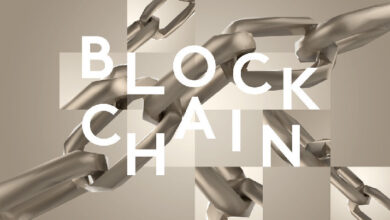The Rise of Chain Abstraction and End of Blockchain Factionalism

We saw a lot of growth in what I like to call the open web in 2023, despite the slow market for much the year. Zero-knowledge (ZK) tech made major strides, the layer 2 and rollup-driven stack took hold and new primitives launched capturing plenty of attention.
This post is part of CoinDesk’s “Crypto 2024” predictions package. Illia Polosukhin is the CEO of the NEAR Foundation.
These trends all laid the groundwork for what will be the major evolution for Web3 in 2024: chain abstraction.
The crypto industry is moving into an era of chain abstraction, where blockchains and other infrastructure will become increasingly invisible to users and to an extent developers.
See also: The Barrier to Mainstream Crypto Adoption Isn’t UX | Opinion
Developers care about distribution, access to users and liquidity and speed to launch –– as well as the security and reliability of the infra they’re using. Ultimately, most end-users — at least those using applications with mainstream potential — don’t care about the infrastructure an app is built on.
Users just want to get value and great experiences, quickly, easily and ideally for free. Hardly anyone thinks about or cares whether a webpage is running on Google, Amazon or something else, we just want it to work.
Zero-knowledge proofs (ZK) introduces a principally new approach to ledger security. Instead of needing to trust a decentralized set of validators, now through developments in ZK cryptography even a single computer can prove that rules were followed with a simple proof.
This means the difference between building on a shared chain with billions of dollars securing it (or spending immense resources to launch a new one), and spinning up a single server. In other words, security doesn’t need to be the deciding factor for developers when they are choosing infra — through recent advancements, transactions and value from one chain can settle on another (with some technical caveats).
This increasingly unified security across networks has major implications for app builders because it changes the set of decisions they’re making when they decide where to build. If you can prove what you’ve done with a ZK proof, it matters less where you’ve built it. Unifying security also means the ability to tap into liquidity from any network, at any layer.
For users and developers alike, the defragmenting of liquidity and security will lead to more flexibility. Similarly, removing the burden of these choices from users lets the open web start to feel more like today’s internet, a single platform experience where you can easily move from app to app without managing dozens of wallets and accounts.
The other major key to smoothing out user experience is account aggregation, or removing the need to manage accounts for every L1 and L2, which are increasingly becoming silos for apps and communities. NEAR, for instance, is working on multichain, non-custodial accounts that will enable cross-chain transactions.
Developers in general need to keep the idea of account. abstraction in mind, in order to deliver a unified experience across all Web3 apps.
See also: Ethereum Upgrade Could Make It Harder to Lose All Your Crypto
Combined with decentralized frontends, which give developers a new programmable environment for building apps that span across blockchains and keep the blockchain details hidden away from users, this is a powerful new paradigm to unlock a new era of smoother user experiences better than what’s available on Web2.
NEAR is not alone in believing that a unified, cross-chain ecosystem is possible. We’re also partnering with Eigen Labs on a fast finality layer for Ethereum rollups, collaborating with Polygon on a zkWASM prover and other initiatives. We see clearly that adoption of the “open web” begins with users’ entry points to Web3.
Chain abstraction means the end of maximalism. Of course technology matters and many of us in Web3 care about the many innovations and choices that distinguish our different approaches. But most people care about experiences and products, not infrastructure.
As crypto marches towards the mainstream, there will be lots of blockchains, rollups and different infrastructure providers running any number and type of applications — but, hopefully, users won’t have to manage or even know about the technical layers.
The open web will be a better web, so let’s focus on delivering better experiences to users rather than cult thinking around a specific blockchain.





